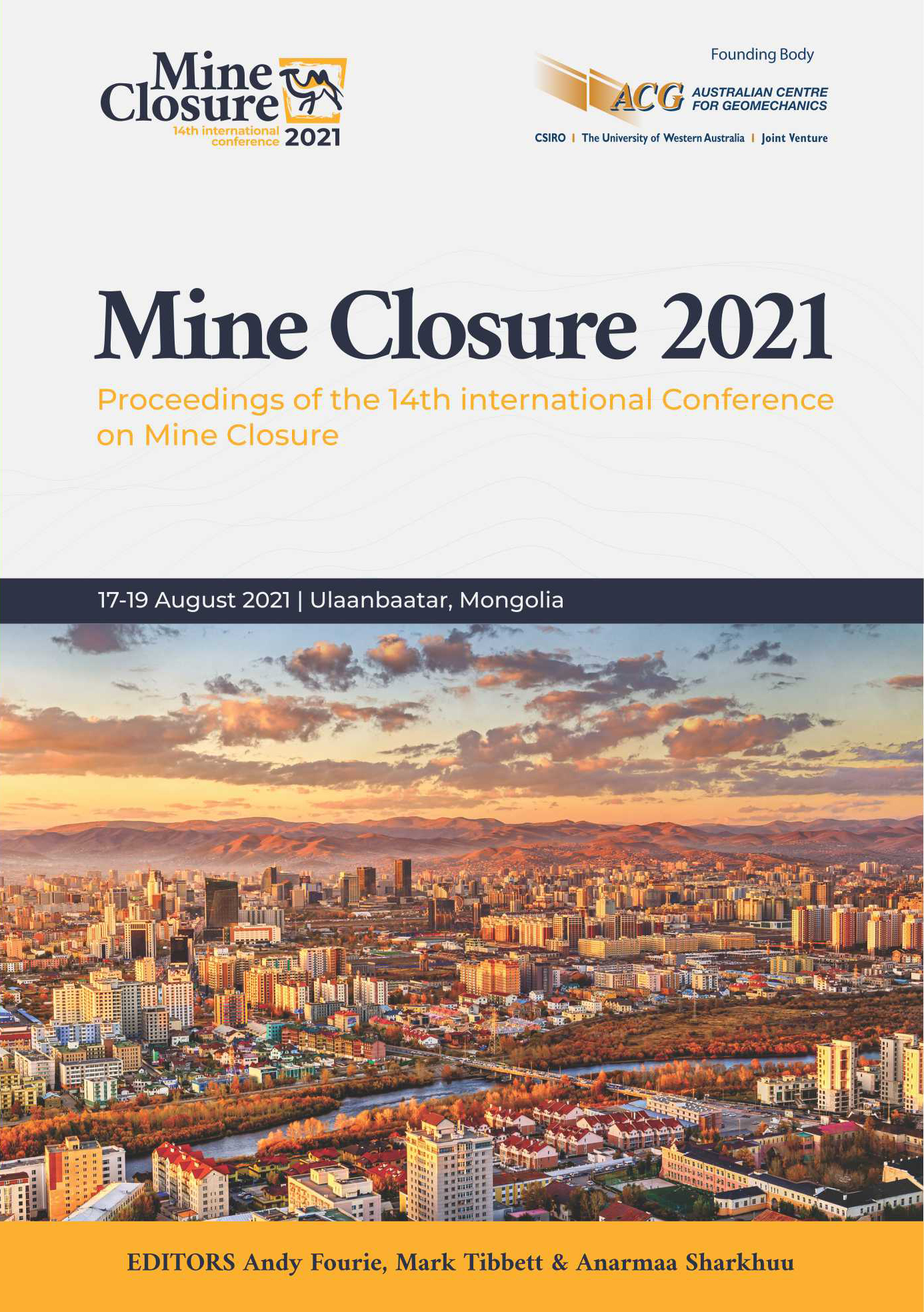Sustainable re-cultivation of coal mines in Mongolia

|
Authors: Frauenstein, J; Wollmann, R; Schlenstedt, J; Konrad, C; Mendjargal, T |
DOI https://doi.org/10.36487/ACG_repo/2152_98
Cite As:
Frauenstein, J, Wollmann, R, Schlenstedt, J, Konrad, C & Mendjargal, T 2021, 'Sustainable re-cultivation of coal mines in Mongolia', in AB Fourie, M Tibbett & A Sharkuu (eds), Mine Closure 2021: Proceedings of the 14th International Conference on Mine Closure, QMC Group, Ulaanbaatar, https://doi.org/10.36487/ACG_repo/2152_98
Abstract:
Mining is an essential cornerstone of the Mongolian economy. 85% of all Mongolian exports are raw materials and natural resources. Mining and mining closure due have a significant impact on the Mongolian environment. The vision of Mongolia is “to become a developed nation that has created the conditions for maintaining and handing down to the future generation the environmental stability and ensuring the possibility of enjoying its long-term benefits by way of creating the economic growth that is based on Green development concept and ensures involvement of citizens”. A German-Mongolian advisory assistance project, agreed between the Mongolian Ministry for Environment and Tourism and the German Federal Ministry for Environment and implemented 2017 till 2019, provided support for the coal-mining sector to specify and to adopt overall rehabilitation standards and recommendations for the implementation of a geo-hydrological monitoring. A “Guideline on the Rehabilitation of Open-pit Coal-mines” (GROM) addresses mine rehabilitation, targeting managers at the operational level and environmental officers from the authorities, as well as public regulators. The technical guidline is framed around the operational sequence in mining operations, i.e. legal basis, planning, operations and mine closure. Particular emphasis is given to the rehabilitation of natural ecosystems and replacement and compensatory measures. Landscape design for rehabilitation requires a holistic view on mining operations as a whole. Environmental staff should be able to improve and assure the quality of executed rehabilitation work and to discover and settle deficits, right from the beginning on of mining projects. The EU Mining Waste Directive (2006/21/EC) were proposed as an approved international regulation with regard to easy applicable technical and pragmatic criteria to assess the impact and remedial requirements caused by hazardous substances impacts and geo-technical issues. For the implementation, the guidance document explains international standards and gives practical recommendations on the different fields of the rehabilitation work in open-pit coal mining. As an overall objective the guideline shall support the Sustainable Development Goals (especially SDG 15 “Protect, restore and promote sustainable use of terrestrial ecosystems, sustainably manage forests, combat desertification, and halt and reverse land degradation and halt biodiversity loss”). Rehabilitation measures support the concept of Land Degradation Neutrality (LDN) of the UN.
References:
GROM 2019, Guideline on the rehabilitation of open-pit coal mines in Mongolia; Mongolian Ministry of Environment and Tourism and German Federal Environment Agency, pp. 115
TGR 2012, Technical guideline on the Rehabilitation of Open-pit Coal-mining Dumps; Chinese Land Consolidation and Reclamation Center and German Gesellschaft für Internationale Zusammenarbeit, pp. 115
WRB 2006, World Reference Base for Soil Resources, World Resources Report Vol. 103 FAO Rome, pp. 145
Battogtokh, B, Woo, N & Nemer, B 2012, ‘Environmental reconnaissance of the Shivee-Ovoo coal mine area in Mongolia’. Environ earth Sci. vol. 7
Hүүрсний уурхайд 2017, Шивээ-Овоогийн нүүрсний уурхайд 2017 онд гүйцэтгэсэн гидрогеологи, геофизикийн судалгааны ажлын үр дүнгийн тайлан
2006/21/EC: Directive 2006/21/EC of the European Parliament and of the Council of 15 March 2006 on the management of waste from extractive industries,
2009/337/EC: Commission Decision of 20 April 2009 on the definition of the criteria for the classification of waste facilities in accordance with Annex III of Directive 2006/21/EC,
© Copyright 2025, Australian Centre for Geomechanics (ACG), The University of Western Australia. All rights reserved.
View copyright/legal information
Please direct any queries or error reports to repository-acg@uwa.edu.au
View copyright/legal information
Please direct any queries or error reports to repository-acg@uwa.edu.au
